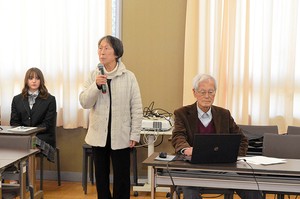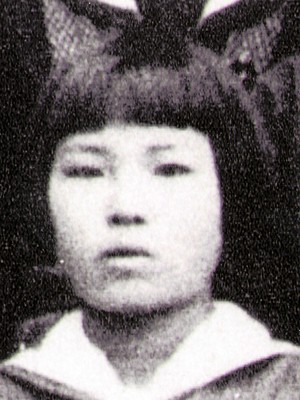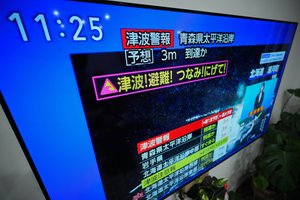April 5, 2023 at 13:40 JST
 Staff at a telephone counseling service in Saitama (Asahi Shimbun file photo)
Staff at a telephone counseling service in Saitama (Asahi Shimbun file photo)
When children cry out for help, how can we be sure to hear them?
The health ministry recently reported that 21,881 people committed suicide in 2022, up 4 percent from the year before. Of the total, 514 were children, ranging in age from elementary and junior high to senior high school students. The figure, a record since figures began being kept four decades ago, was up 15 from the previous landmark set in 2020.
In any year, suicide is the leading cause of death among children and adolescents aged 10 to 19. Among Group of Seven nations, this is a phenomenon unique to Japan, according to the ministry. Clearly, the situation requires homes and schools to network to detect early signs of trouble in children so appropriate measures can be taken before it is too late.
As in previous years, “school-related problems” were the leading cause of suicide among schoolchildren. This could be further categorized into “poor academic performance,” “worries about what the future holds” and “not getting along with classmates.”
“Parent-child relations” were cited by many youngsters who killed themselves. In this regard, there was an increase among male senior high school students in 2022.
A common factor in young suicides, according to experts, is an inability to bear the burden of failing to live up to the expectations of their parents or failing behind in their schoolwork at the schools the children had studied hard to get into. However, there also are many cases where the exact cause of suicide cannot be identified because the problems involved are so complex and intertwined or have a long history.
Especially since the COVID-19 pandemic began in 2020, suicides among elementary, junior high and senior high school students have remained at high levels.
Experts have noted that the pandemic resulted in a greater number of individuals in this age group spending far longer at home, which at times strained relations with other family members. In addition, many children became obsessed with gaming and stopped keeping sensible, healthy hours.
Another factor involved an inability to make friends. As a result, many children were unable to confide their problems with others, resulting in them becoming emotionally unstable and never managing to recover.
Changes in elementary, junior high and senior high school students are often noticed at school by teachers or school nurses. While the latter are basically expected to personally tend to the needs of students, it is also possible at times to catch tell-tale signs of trouble from the assessment notes each teacher or nurse enters into the mobile device that is provided by the school.
It is said to be useful to teach children how to seek help on their mobile phones or social media.
However, many youngsters are burdened with complex family problems, or have mental health issues that require medical care. There are limits to how far schools alone can help.
It is important to ensure that school counselors are consulted, and school social workers can contact the pertinent medical and welfare institutions.
The central government, working with local entities, must forge ahead with working style reforms for teachers and continue striving to make it easier for experts to spend longer hours at schools.
Schools also need to use social media to enable troubled students to reach out for help and network with support groups such as the “Inochi no Denwa” telephone counseling service. Collaboration with residents is also important, through programs such as the “kodomo shokudo” volunteer-run inexpensive meal service for needy children.
Schools need to always maintain good relationships with outside groups such as those mentioned to enable them to share information smoothly whenever necessary.
--The Asahi Shimbun, April 5




















A peek through the music industry’s curtain at the producers who harnessed social media to help their idols go global.
A series based on diplomatic documents declassified by Japan’s Foreign Ministry
Here is a collection of first-hand accounts by “hibakusha” atomic bomb survivors.
Cooking experts, chefs and others involved in the field of food introduce their special recipes intertwined with their paths in life.
A series about Japanese-Americans and their memories of World War II